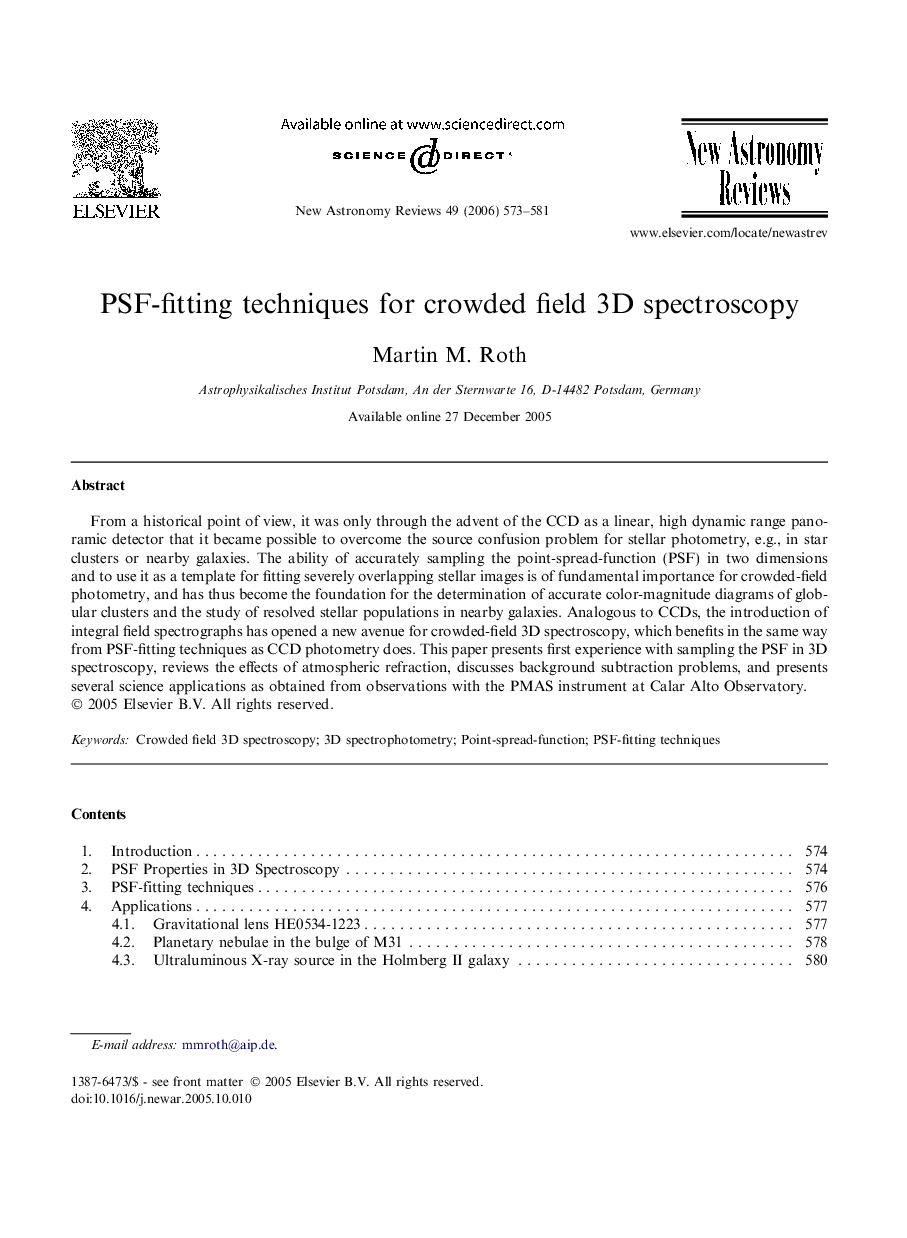| Article ID | Journal | Published Year | Pages | File Type |
|---|---|---|---|---|
| 1780526 | New Astronomy Reviews | 2006 | 9 Pages |
Abstract
From a historical point of view, it was only through the advent of the CCD as a linear, high dynamic range panoramic detector that it became possible to overcome the source confusion problem for stellar photometry, e.g., in star clusters or nearby galaxies. The ability of accurately sampling the point-spread-function (PSF) in two dimensions and to use it as a template for fitting severely overlapping stellar images is of fundamental importance for crowded-field photometry, and has thus become the foundation for the determination of accurate color-magnitude diagrams of globular clusters and the study of resolved stellar populations in nearby galaxies. Analogous to CCDs, the introduction of integral field spectrographs has opened a new avenue for crowded-field 3D spectroscopy, which benefits in the same way from PSF-fitting techniques as CCD photometry does. This paper presents first experience with sampling the PSF in 3D spectroscopy, reviews the effects of atmospheric refraction, discusses background subtraction problems, and presents several science applications as obtained from observations with the PMAS instrument at Calar Alto Observatory.
Related Topics
Physical Sciences and Engineering
Physics and Astronomy
Astronomy and Astrophysics
Authors
Martin M. Roth,
